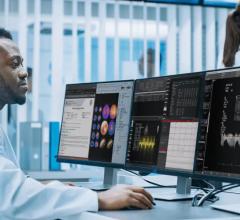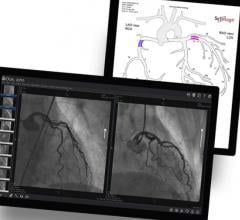
It is estimated that only 10% of United States cardiac Cath labs use structured reporting to improve efficiency and bolster patient outcomes.
February 16, 2022 – Cardiology is an inherently data-dependent and data-driven practice. Patient medical history records, images, test results, and more go into every diagnosis and treatment decision. However, most organizations don’t take advantage of structured reporting, most cardiovascular information systems (CVIS) cannot effectively mine the wealth of data from a facility’s cardiology department. There is no debate on how crucial structured reporting is. It is considered the first step to improving patient care and enhanced data accuracy—important points raised by a coalition of 14 professional societies led by the American College of Cardiology and by the Society for Cardiovascular Angiography and Interventions.1 It’s estimated that only 10% of United States cardiac Cath labs use structured reporting to improve efficiency and bolster patient outcomes.1
Dr. Serge Makowski, CEO and Co-founder of leading healthcare software development firm MediReport, said, “The goal of structured reporting is to make sure there is consistency in the documentation reporting of every cardiac procedure, regardless of the physician’s training, background, or style of work and that 100% of procedural data is recorded abiding by the latest clinical guidelines. The system intelligently guides the clinician on the required and important procedural data and generates near real-time reports which are automatically incorporated into the facility’s existing electronic health record. Subsequently, this can be accessed by any healthcare provider, which informs evidence-based treatment decisions, improves billing, and betters the patient care experience.”
Structured reporting systems fully incorporate data, workflow, analytics, inventory management, billing, and process improvement in one central documentation system.1 The same data may be repurposed repeatedly for clinical research or registry participation, without the need for any manual data re-entry.
Basic Features of Structured Reporting
A growing number of healthcare organizations are exploring structured reporting. But not all structured reporting systems are created equal. Clinicians should look for several key features to ensure maximum efficiency, such as:
- The centralization of all information (dosimetry, pressures, measurements, dynamic drawing, key PACS images…) from the cardiac procedure. This means the system must seamlessly interface and operate with the facility’s software packages (EMR, modalities, HIS...).
- The effortless recording and tracking of all materials and devices before, during and after the procedure using techniques like barcode scanning.
- The generation of reports, complete with full sentences, which may be easily understood by the patient, or any other clinicians involved in follow-up care.
- The ability to select multiple languages for report generation, offering both convenience for patients and flexibility to providers.
- Continuous connectivity to cloud-based platforms which allows remote access to data at any time.
A Unified System2
Two interventional cardiologists developed such a software suite, called CardioReport 360 to help improve workflows, reduce errors, and save hospitals time and money. This platform offers several advantages compared to other CVIS; one being calculating automatic SYNTAX scoring, which saves time during procedures and reduces error rates to improve diagnostic accuracy. Additionally, the system integrates in real-time the latest clinical guidelines and classification systems continuously available to generate reports. Another important asset are its templates, which are customizable to the physician and the practice’s specific workflows and procedures, which improves clinical adoption and satisfaction during use.
However, one of the most important features of a unified reporting system is the intelligent report conclusions. The auto-generated report conclusions are based off selected key words from procedural data which provides a quick, but thorough, understanding of the lesion’s description and the procedure results. Makowski said: “The algorithm behind the conclusion synthesis is based on 25-plus years of medical expertise that applies globally and is paramount in the patient’s care journey and treatment. A bifurcation of a lesion can complicate an angioplasty as the physicians will take a decision between angioplasty and surgery hence the bifurcation criteria will be selected as an important item in the conclusion. Or, if thrombosis appears in the description of the procedure, it will be selected as a determinant item in the conclusion as it might complicate the angioplasty and will carry a tremendous impact in patient’s treatment. However, if, let’s say, the lesion is concentric, or eccentric is not deemed determinant thus will not be retained in the conclusion.”
Lastly, reports are finalized before the patient even leaves the Cath Lab which vastly improves timely reporting as well as valuable Cath Lab throughput time. Referring doctors, as well as those participating in follow up care, have near instant access to all vital information about the patient and procedure. Patients benefit from no lapse in care, while hospitals and ambulatory surgical centers can boost the bottom line through quicker turnover.
Makowski said, “We, the physicians, rely on intelligent insights to be gathered from the reports, data that otherwise would be ignored. I no longer need to rely on multiple applications to get the complete picture of my patient. Having access to an extensive number of reporting parameters in a single unified CVIS and being able to generate a high quality and accurate report almost instantly, maximizes efficiency and accuracy.”
For more information: https://www.medireport.net/
References:
1. Tierney, Mary C.; “Structured Reporting: The Road Map for Better Data, Workflow and Reports”; Cardiovascular Business, Accessed 08 Feb 2022; cardiovascularbusiness.com/sponsored/1170/topics/practice-management/structured-reporting-road-map-better-data-workflow-and-0.
2. Landing Page; “Powering the best hospitals for 25 years”; Accessed 07 Feb 2022; MediReport; medireport.net/cardioreport


 May 15, 2024
May 15, 2024 








